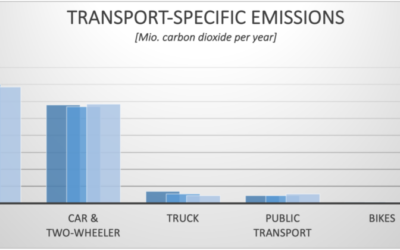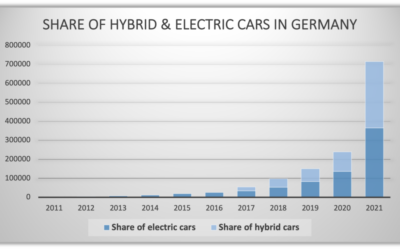Mobility and traffic on the roads cause considerable ecological, social, and economic damage and burdens. The share of traffic in air pollutant emissions is more than 50 percent for carbon monoxide and nitrogen oxides. The high and increasing carbon dioxide...
Urban mobility
A large majority of European citizens live in an urban environment, with over 60 % living in urban areas of over 10 000 inhabitants. They live their daily lives in the same space, and for their mobility share the same infrastructure. Urban mobility accounts for 40 % of all CO2 emissions of road transport and up to 70 % of other pollutants from transport.
European cities increasingly face problems caused by transport and traffic. The question of how to enhance mobility while at the same time reducing congestion, accidents and pollution is a common challenge to all major cities in Europe. Congestion in the EU is often located in and around urban areas and costs nearly EUR 100 billion, or 1 % of the EU’s GDP, annually. Cities themselves are usually in the best position to find the right responses to these challenges, taking their specific circumstances into account.
Efficient and effective urban transport can significantly contribute to achieving objectives in a wide range of policy domains for which the EU has an established competence. The success of policies and policy objectives that have been agreed at EU level, for example on the efficiency of the EU transport system, socio-economic objectives, energy dependency, or climate change, partly depends on actions taken by national, regional and local authorities. Mobility in urban areas is also an important facilitator for growth and employment and for sustainable development in the EU areas.
Legal & Political Factors
The European Green Deal (COM(2019)640) and the Sustainable and Smart Mobility Strategy (COM(2020)789), adopted in 2019 and 2020 respectively, provide a new EU framework for the overall direction of EU transport policy for the years to come, and...
Social & Cultural Factors
Social and cultural factors strongly influence mobility. The growth rate of cars within a city is crucial for air pollution and the overall ecological footprint. Social factors such as trends that arrive in the environment are also a big...
Technological Factors
A major technological factor for the mobility sector is the advancing electric mobility. These offer many advantages: Electromobility enables emission-free drivingDue to the high energy efficiency of electric cars, they enable drastic energy savings in...
Example of innovative solutions
In the following part some innovative solutions for a more sustainable and better service system in the field of mobility and transport in a city are presented. Circular support models Urban transport is responsible for almost half of urban energy consumption and 90%...
References
[1] Padam Mobility. (2021). Urban mobility: the new forms of transport. [online]. Available at: https://padam-mobility.com/en/the-new-forms-of-urban-mobility/ [Accessed 1 Jan. 2022]. [2] Mobilität in Deutschland –...
More information
EU and other websites EU _ Mobility and TransportEltis _ The Urban Mobility Observatory “Eltis facilitates the exchange of information, knowledge and experience in the field of sustainable urban mobility in Europe.” CIVITAS initiative _ Sustainable and smart...
Animation goes here




